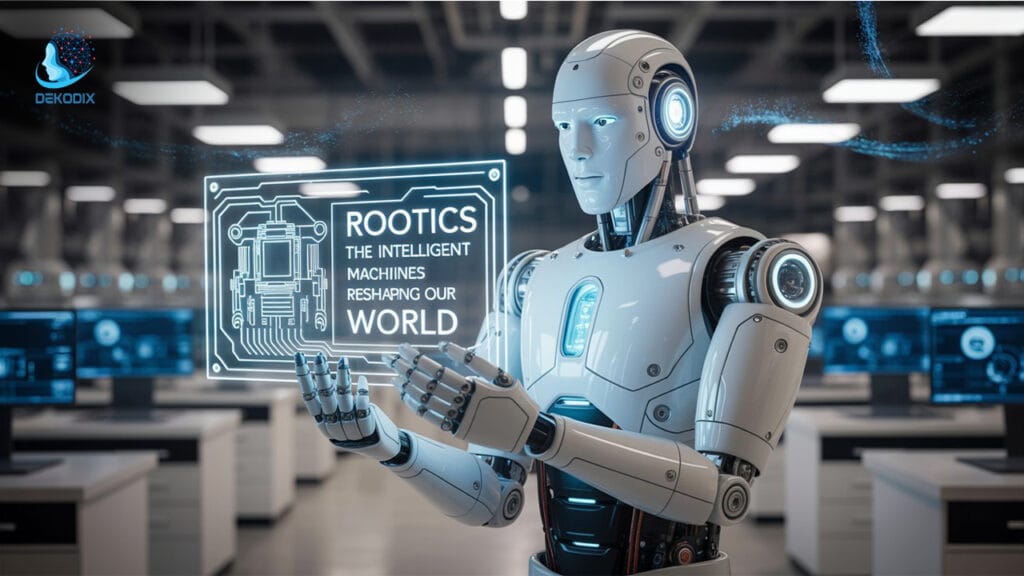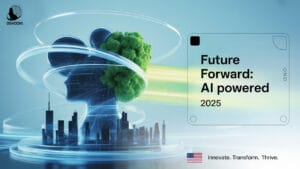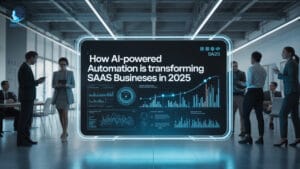What Is Robotics?
Robotics is the fusion of engineering, electronics, computer science, and AI to build machines capable of performing tasks independently or semi-autonomously. These machines-robots can move, sense, and make decisions. From industrial machines to AI assistants, intelligent machines covers a wide range of applications. It plays a growing role in replacing or enhancing human capabilities in nearly every sector. This makes it a core technology in the Fourth Industrial Revolution.
The Rise of Robotics in the Modern Era:
Over the past few decades, robotic technology has moved beyond factory floors and into nearly every aspect of daily life. From intelligent home assistants to precision surgery tools, These AI-driven machines has evolved into a cornerstone of the Fourth Industrial Revolution. Its integration into diverse sectors has fueled rapid innovation, making it one of the most transformative technologies of the 21st century.
Industrial Robotics and Automation
Robots in manufacturing improve speed, consistency, and safety. They’re used for repetitive tasks like welding, assembling, and packaging. Industries such as automotive and electronics rely heavily on robotic systems to reduce errors and increase productivity. These machines operate 24/7, outperforming human labor in efficiency. As automation grows, factories become smarter and more cost-effective.
SOURCE: https://www.arcossrl.com/wp-content/uploads/2020/08/W299-20-scaled.jpg
Humanoid Robots and Human-Robot Interaction
Humanoid robots are built to interact with humans in a natural way. They can mimic human facial expressions, gestures, and even voice. Commonly seen in retail, hospitality, and healthcare, these robots help with tasks like greeting, customer support, and patient interaction. They’re also used in social research and elderly care. As they improve, humanoid robots may become daily companions.
SOURCE: https://www.movella.com/resources/blog/how-to-train-a-robot-with-motion-capture
Robotics in Healthcare
Medical robotics is transforming surgery, diagnosis, and rehabilitation. Surgical robots like Da Vinci offer greater precision and minimal invasiveness. Rehabilitation robots and exoskeletons help patients regain movement and strength. They reduce physical strain on both doctors and patients. These smart machines also supports telemedicine and hospital automation.
SOURCE: https://www.xcubelabs.com/blog/robotics-in-healthcare
AI-Powered Robotics
Artificial intelligence allows robots to think, learn, and adapt. These machines analyze data, recognize patterns, and make decisions in real time. AI-powered robots are used in autonomous vehicles, warehouses, surveillance, and delivery. Their ability to improve with experience makes them ideal for complex tasks. They’re the backbone of the shift from automation to autonomy.
SOURCE: lucidbots.com
Robotics in Education and Research
Robots in classrooms make STEM subjects more engaging and hands-on. Students can program robots and understand engineering logic interactively. In research, these intelligent machines leads innovation in swarm behavior, soft-body machines, and AI integration. Universities and tech labs use robots to simulate real-world challenges. This encourages problem-solving and creativity among learners.
SOURCE: https://thinkml.ai/content/images/size/w1200/2022/02/Use_of_Robots_in_Education.jpg
Ethics and Challenges in Robotics
This technology raises important ethical questions: Will automation displace jobs? Can these systems be misused? How should privacy and bias be managed? As innovation progresses, regulations and responsible development become critical. The future includes brain-machine interfaces, and quantum computing. Balancing innovation with ethics is essential for long-term impact.
The Future of Robotics
The next frontier includes brain-machine interfaces, quantum-enhanced robotics, and soft robotics that can safely interact with delicate environments. As we look ahead, the synergy between humans and machines will define new possibilities in communication, mobility, and labor.
Conclusion
Robotics has evolved from a niche field into a transformative force across every major industry. Its influence is visible in how we manufacture goods, deliver healthcare, educate students, explore space, and even manage our homes. Robots today are not just tools, they are intelligent partners capable of learning, adapting, and working alongside humans in ways previously unimaginable.
As artificial intelligence continues to enhance robotic capabilities, these machines will become more autonomous, more human-like in interaction, and more deeply embedded in daily life. However, this rapid advancement brings responsibility. Ethical considerations, such as data privacy, job displacement, bias in AI algorithms, and the militarization of robotics, must be addressed proactively.
The future of robotics lies in striking a balance – leveraging its vast potential to improve lives while safeguarding against unintended consequences. With thoughtful innovation, collaboration between technologists and policymakers, and a focus on human-centric design, robotics can lead us into a future that is more efficient, inclusive, and sustainable.
In short, the robotics revolution isn’t coming – it’s already here. And how we shape it will define the next era of human progress.




